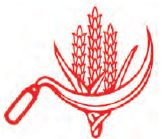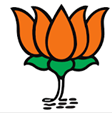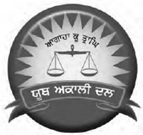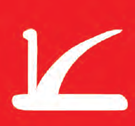Political Parties
Class 10-Political Science-Chapter-3- Maharashtra Board
Notes
Political Party : People holding similar views on the public issues come together and form a political party.
- Political parties are intermediary institutions which connect common people, democracy, representatives and elections.
- Political parties exists in all democratic systems in the world. In fact, only in a democratic set up parties compete with each other. Political parties give shape to democracy.
- Political parties are like social organisations which work for resolving social problems.
- Political parties too aim at public welfare but their goals and styles of working are different.
- Political parties are organisations with objectives of achieving political power through the electoral process
Political parties act as a link between government and the people : People’s reaction to the policies and their expectations are conveyed to the government too by the parties
Political parties are social organizations :
Objective of political parties : Achieving power through elections is the main objective of political parties.
Features of Political Parties :
Mass base :
- Every political party is formed with some ideology.
- Political parties take a certain stand towards public issues.
- Their ideology and their stand towards public issues are conveyed to the people through various programmes.
- If the people agree with their role and ideology, they get the support of the people.
- Such social support received by a political party is called ‘mass base’.
Partyless Democracy : Mahatma Gandhi, Vinobha Bhave and Jay Prakash Narayan put forth the idea of a party-less democracy. To remove the faults in the party system, malpractices and competition these leaders opposed the party system.
Party System :
- If power remains with one party for a longer period and if other political parties have no influence, it is one party system.
- When two political parties are influential and they enjoy power alternatively, it is called two party system.
- When many political parties compete for political power and more or less have equal influence is called multi-party system.
Changing form of political parties in india :
National Parties in India : To get recognition as a national party, the Election Commission has prescribed the following conditions:
- A political party should secure minimum 6% of the valid votes in four or more States in the earlier Loksabha or State Assembly elections and minimum 4 members should be elected in the Loksabha from any state or states in the earlier elections.
Or
- The candidates of a party should be elected from minimum 2% constituencies out of total Loksabha constituencies and from minimum 3 states.
1) Indian National Congress (INC) : Established in the year 1885 At the time of its establishment, Congress was an all comprehensive movement working for national independence. Groups with different ideologies had come together in this nationalist movement. Symbol : Information/Policies/Ideology :

2) Communist Party of India (CPI) : Established in the year 1925 It is an old party in India. This party works for the welfare of labourers and workers. Symbol: Information/Policies/Ideology :

3) Communist Party of India (Marxist -CPM) : Established in the year 1964 Symbol: Information/Policies/Ideology :

4) Bhartiya Janata Party (BJP) : Established in the year 1980 Bharatiya Janata Party is an important party at the national level. The Bharatiya Janata Party is one of two major political parties in India, along with the Indian National Congress. It is the current ruling political party of the Republic of India, having been so since 2014 Symbol : Information/Policies/Ideology :

5) Bahujan Samaj Party (BSP) : Established in the year 1984 The Bahujan Samaj Party is a national level political party in India that was formed to represent Bahujans, referring to Scheduled Castes, Scheduled Tribes, and Other Backward Classes, along with religious minorities Symbol: Information/Policies/Ideology :

6) All India Trinamool Congress (TMC) : Established in the year 1998 Symbol : Information/Policies/Ideology :

7) National Congress Party (NCP) : Established in the year 1999 Symbol: Information/Policies/Ideology :

Changing nature of Political Party system in India :
- After independence there were attempts in the states of Tamil Nadu, Punjab, Jammu and Kashmir to break away from the federation and form new countries.
- Later, they gave up their demand for independence and asked for more autonomy.
- After 1990, regional parties like Shiv Sena and Telugu Desam started demanding power at the state and national level. ,
- Regional parties in the north eastern region gave up their demand for a separate state and started demanding more autonomy.
- The journey of the regional parties began with a demand for a separate state then demanding autonomy and now entering mainstream national politics.
- The politics of coalition has increased its influence in national politics.
Regionalism : ‘
- There is diversity in religion, culture, language, traditions and geographic area in India.
- The feeling of affinity develops towards ; these factors. Affinity towards the region gradually tums into the identity consciousness and gives rise to pride.
- The excessive pride turns morbid taking the form of Regionalism.
Regional Parties :
- A regional party is a group which takes great pride in the different identity of their region and enters the race for capturing power.
- The influence of such parties is limited to their region.
- Though they play a significant role at regional level they influence the national politics sometimes.
Formation of Regional Political Parties :
Role of Regional Parties :
Demands of the Regional Party :
Regional Party : Recognition criteria
- The political party should secure 6% of the valid votes in the previous Lok Sabha or state Assembly elections.
- At least 2 members should be elected in the Vidhan Sabha (State Assembly); OR Minimum 3% of seats out of total seats of Vidhan Sabha (State Assembly) or minimum 3 seats should be secured by a political party.
Main Regional Parties in India:
1) Shiv Sena (SS) : Established in the year 1966 Influential State : Maharashtra Symbol: Information/Policies/Objectives :

2) Shiromani Akali Dal : Established in the year 1920 Influential State : Punjab Symbol: Information/Policies/Objectives :

3) National Conference : Established in the year 1932 Influential State : Jammu & Kashmir Symbol : Information/Policies/Objectives :

4) Dravid Munnetra Kazahgam (DMK) : Established in the year 1949 Influential State : Tamil Nadu Symbol : Information/Policies/Objectives :

5) Assam Gana Parishad (AGP) : Established in the year 1985 Influential State : Assam Symbol : Information/Policies/Objectives :

Click on below link to Download PDF
MSBSHSE-Class 10-Political Science-Chapter-3-Political Parties-Notes
MSBSHSE-Class 10-Political Science-Chapter-3-Political Parties-Solutions
MSBSHSE-Class 10-Political Science-Chapter-3-Political Parties-Books
Useful links :
| Main Page : - Maharashtra Board Class 10 - History & Political Science - All chapters notes, solutions, videos, test, pdf. Books : MSBSHSE -Class 10th Political Science Text Books – Chapter wise PDF for download Previous Chapter : Chapter 2 -The Electoral Process - Online Notes Next Chapter : Chapter 4 - Social & Political Movements - Online Notes |